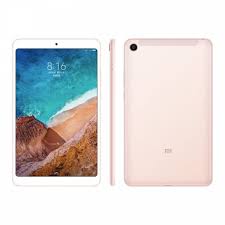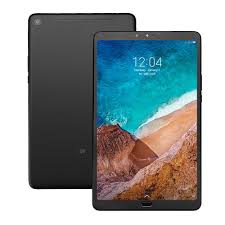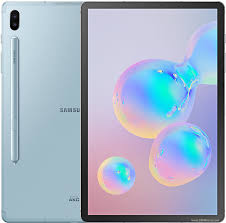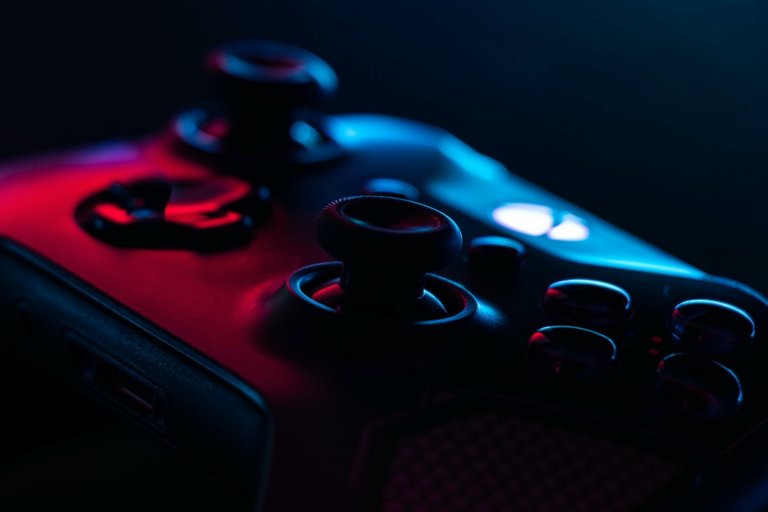Out of the competition, as always. The Xiaomi Mi Pad 4 is an economical combination of modern technology and low prices, with only a few disadvantages. As you can see from our review of what true and unsuccessful action Xiaomi has taken to the fourth generation of its famous tablet.
The Xiaomi Mi Pad series is backed by the fourth generation. The new 8-inch tablet from the Chinese giant is available in three versions: 3/32GB, with 4/64GB and 4/64GB with LTE and GPS modules.
All configuration models run on the Qualcomm Snapdragon 660 chipset, which combines the core of the Qualcomm Cryo 260 processor and Qualcomm Adreno 512 graphics. The Pad4A features a 13MP main and 8MP front camera. The camera on the front panel can be used to unlock the tablet (a system based on the AI algorithm) – the Mi Pad 4 got the first of its series at its disposal.
Tablet ini dilengkapi layar IPS 8 inci dengan rasio 16:10 dan resolusi 1920×1080. Mi Pad 4 juga memiliki WiFi dual-band, Bluetooth 5.0, baterai 6000mAh, port USB Type-C, dan jack audio 3,5mm.
Pada pertengahan Agustus, Xiaomi juga merilis Mi Pad 4 Plus dengan layar 10,1 inci. Fitur kedua perangkat sama, satu-satunya perbedaan adalah bahwa versi Plus memiliki layar dan baterai yang lebih besar (8620 mAh).
Pada titik ini di Eropa, Mi Pad 4 hanya tersedia dari penjual dan sekitar 180 euro untuk model 32-gigabit dan 210 euro untuk model 64-gigabit. Versi dengan modul LTE akan dikenakan biaya 20 euro lagi. Pada titik ini, tidak diketahui apakah Mi Pad 4 dan kakaknya akan secara resmi diimpor dan dijual di Eropa, tetapi membeli dari vendor lokal sepertinya ide yang lebih baik daripada memesan langsung dari toko Cina.
Produk baru tidak memiliki banyak pesaing asli, dibandingkan dengan tablet Android modern dan kompak dengan harga dua kali lipat lebih baik dari 200 Euro untuk tablet Mi Pad 4, kami memiliki Amazon Fire HD8, Huawei MediaPad M3 Lite 8, MediaPad M3 8.4 dan MediaPad. M5 8.4 dipilih. Perhatikan bahwa dua perangkat terakhir jauh lebih mahal daripada Mi Pad 4.

Desain dan fitur
Mi Pad 4 baru tersedia dalam warna hitam dan emas, sedangkan dalam kasus kedua panel depan berwarna putih. Perangkat ini memiliki berat 342 gram. Kualitas pembuatannya tinggi, yang sangat baik untuk tablet kelas menengah; Gadget yang menyenangkan secara visual dan estetika. Satu-satunya kekuatan fisik dan tombol volume ada di sisi kanan kasing. Mereka memiliki kekuatan stres yang seimbang dan mereka duduk dengan tenang di tempat mereka. Secara umum, kami menyukai desain case, Mi Pad 4 terlihat lebih mahal daripada uang.
Layar ditutupi dengan kaca pelindung, yang mengalir dengan lancar ke bingkai logam di kedua sisi. Margin di sisi layar cukup kecil, tetapi yang atas dan bawah mirip dengan kebanyakan tablet. Layar menempati% occup% dari wilayah panel depan – indeks rendah menurut standar ponsel cerdas.
Penutup belakang tablet terbuat dari aluminium dan mendinginkan tangan dengan cara yang menyenangkan. Sudut dan tepinya bulat, tetapi ada langkah kecil antara layar dan penutup logam, yang agak merusak kesan keseluruhan. Penutup logam membantu menutupi tikar dan cetakan.
Materials
Our test device has 64 GB of memory (EMMC 5.1), of which 51 GB is available to the user after the first launch. The tablet has a microSD card slot if you need more space. There is an alternative option – to purchase the Mi Pad 4 Plus, which has 128 GB of internal memory.
Also, users can connect to an external drive through a USB Type-C port. However, in this case, you need to buy the appropriate adapter, since the manufacturers have not added it to the kit. You can attach other peripherals such as mice and keyboards.
Software
Out of the box for Mi Pad 4, MIUI 9 is installed – a customized version of Android Orio 8.1 from Shaomi. The security patch for the system in our test sample is August 1, 2018, version MIUI 9.8.8.23 beta (this assembly has already been seen on the Xiaomi Mi 6X and Xiaomi Redmi 6 Pro). Upgrading to MIUI 10 is still in beta test.
In fact, MIUI is a shell on Android OS, which has sufficient customization and customization capabilities. The funny thing is that it resembles iOS much more than authentic Android. In MIUI 9 compared to the previous version, several new settings, features have been added, the interface has been updated and the work speed has been improved.
Our test sample works in the Chinese version of the software, as Google applications and services are not pre-installed by default (Google Play). Shaomi’s equivalent places made their way to the Chinese ecosystem. There is no global firmware for this tablet at the time of writing this review. This means, among other things, that you are also limited to choosing the interface language: English and Chinese only.
Whatever the case, the official Xiaomi forum has instructions for installing Google Play on the device with Chinese firmware (the instructions are for the smartphone, but the procedure is the same for the tablet).
Wireless and on
Me Pad 4 WiFi supports standard IEEE 802.11 a / b / g / n / ac and can connect to both 2.5 GHz and 5 GHz bands. The signal reception quality of our sample is great – you can safely continue to surf the Internet, even if the router is away from you. Interestingly, the tablet supports the latest Bluetooth 5.0, but it has no older NFC. The test tablets showed 450 Mbit / s results in both tests, which was 200 Mbit / s more than the best and more expensive competitor Huawei MediaPad M3 8.4
The version supports LTE Cat 6 with mobile Internet access, data acquisition speed is 300 Mbps. Our test sample can only work in 10 LTE bands; There is no justification for the popular 20th band in Europe. We expect that the manufacturer will associate the missing range with the official launch (if any) of the device in Europe.
We decided to test the quality of the microphone, since MI Pad 4 could be used for communication over Skype. During a video call, the voice is somewhat distorted, but overall, our conversation greatly appreciates the quality of the voice transmission. Considering how much this device is costing it is a huge plus. The original speaker’s sound is good as well.
Networking
IPF3 Client (Received) TCP1m4mx10
Shaomi Me Pad 4
Adreno 512, 660, 64GB EMMC Flash
446 MB / s ∼100% + 944%
Huawei MediaPad M3 8.4 inches
Mali-T880MP4, Kirin 950, 32GB EMMC Flash
209 MB / s ∼47% + 389%
Huawei MediaPad M5 8.4
Mali-G71 MP8, Kirin 960, 32GB EMMC Flash
203 MB / s ∼46% + 375%
Amazon Fire HD 8 2017
Mali-T720, MT8163 V / B 1.3 GHz, 16GB EMMC Flash
99.3 MB / s ∼22% + 133%
Huawei MediaPad M3 Lite 8
Adreno 505, 435, 16GB EMMC Flash
42.7 MB / s 10% 0%
IPF3 Client (send) TCP1m4mx10
Shaomi Me Pad 4
Adreno 512, 660, 64GB EMMC Flash
450 MB / s ∼100% + 896%
Huawei MediaPad M3 8.4 inches
Mali-T880MP4, Kirin 950, 32GB EMMC Flash
209 MB / s ∼46% + 362%
Huawei MediaPad M5 8.4
Mali-G71 MP8, Kirin 960, 32GB EMMC Flash
205 MB / s ∼46% + 354%
Amazon Fire HD 8 2017
Mali-T720, MT8163 V / B 1.3 GHz, 16GB EMMC Flash
86 Mbit / s ∼19% + 90%
Huawei MediaPad M3 Lite 8
Adreno 505, 435, 16GB EMMC Flash
45.2 MB / s 10% 0%
Only the LTE version of MI Pad 4 has navigation support, so you should keep this in mind when purchasing a tablet. Our test sample supports GPS, BeiDou and GLONASS satellite systems.
We took the Mi Pad 4 for a bike ride with the professional Garmin Edge 520 Navigator. The tablet’s built-in track finished within 310 meters from the 5.65-km track reference. The error is pretty serious, but it’s pretty normal for a $ 200 tablet. Generally, the capabilities of the tablet will be sufficient for general purposes where ultra-high precision is not required.

Camera
Photo taken from the front camera of the tablet is a picture taken from the front camera of the tablet
The tablet is shot from a 13-megapixel main camera
Tablets are rarely used for shooting – for this purpose, people are now increasingly using smartphones with sophisticated cameras. However, in that case the Mi Pad 4 has a 13-megapixel main camera installed. Omnivision, Produced by Model Photosensor: OV13855 Pooreplus.
Each pixel is 1.12 microns, aperture f / 2.0. There is no stability, so getting a clear picture is usually pretty difficult. Still, the sharpness in the resulting photos is good, but the detail is not very good. Also, the colors of the pictures are pale. The camera has a good dynamic range, so areas with different illumination of the frame are usually displayed. Unfortunately, the images are noisy, even though the image is taken in bright light, and when there is a lack of light, they are significantly amplified.
The front camera is commonly used on tablets. So, it would be logical if the Mi Pad 4 had a better front-end, but Shaomi clearly thinks differently. The front of the tablet features a 5-megapixel camera with an Samsung isocele photosensor and an F / 2.0 aperture. Its quality is good enough for video calls and selfie shots, but not enough shutter speed and sharpness. Furthermore, the colors of the images taken from it are more pale than the original camera.
Mi Pad 4 can record video at 1920 fx up to 1920×1080 resolution. The sound in the videos is good, but there are similar issues when creating an image with a colorful description.
Interactive photo comparison
How can different models shoot on the same topic? Click (the smartphone) or move the pointer over the desired section of the image to view the windows in detail below. By clicking on any of them, the corresponding frame can be opened in full size.
We tested the Mi Pad 4 in terms of controlled light conditions to further analyze the quality of the original camera shooting and color reproduction. For objective assessment, we use the X-Right ColorChecker Passport. The results are shown on the right. The tests confirm the initial impressions perfectly: the 1MP camera has a natural color representation but all shades are very pale. Also seen in the picture, the shades of gray are very dark.
In the picture of the test table below, all the drawbacks of the main camera are noticeable. Not sharp enough, the details in the image are quite minimal, as the smaller objects blend into the gray background. The same thing happens with black text on a gray background.
Accessories and Warranties
The Mi Pad 4 (LTE) comes with a modular charger (5V, 2A), a USB Type-C cable and a clip to remove the SIM card tray. In addition, you will find various instructions in the box, including tablets; Individually, you can create a branded cover-book compatible with this model.
Our test copy came with a European plug, for which I would certainly like to thank Trade Schengen, who provided our tablet. Xiaomi standard package does not include an adapter with Euro plug.
The warranty period is 12 months for all versions of MI Pad 4.
However, Trading Schengen offers an additional guarantee that allows customers to exchange the tablet for a warranty at the time of sale. Due to this possibility, the waiting time for exchange / repair under warranty is significantly reduced.
Input Devices
In our test sample, the default keyboard with a Chinese format is installed from Xiaomi. Users can easily install any other keyboard from Google Play (if only Google Play is installed, see the software section above for details).
The touch screen on the Mi Pad 4 is made by capacitive technology and provides accurate recognition of touches, even at corners. The tablet supports facial recognition unlocking, no fingerprint scanner. Unfortunately, in our experiments, facial recognition works slowly and accurately, as in practice this function is obsolete. In addition, the tablet was often left in the hands of others whose faces we did not register in the settings, which again proved to be a failure of this method of blocking on this device. Oddly enough, this chip works without any complaints on the same firmware version in Xiaomi Redmi 6 Pro (Mi A2 Lite), because of the issues with the Mi Pad 4 we cannot say exactly.
The tablet is controlled by a group of gestures or gestures at the bottom three – their implementation here is no different from the company’s smartphones. A brief gesture from the bottom is the transfer to the home screen, which will open a list of recent applications if you hold your finger for a while. You can switch back to the application or OS interface by dragging from the left or right edge of the screen.
Display
The Mi Pad 4 has an 8-inch IPS display with a resolution of 1920 1920 1080 pixels, the density is 283 dot per inch. According to our X-Rite i1Pro 2 spectroscopic testimony, the uniformity of the backlight is 83%, which is about 10% less than its competitors. This means that there is a slight difference in brightness between different parts of the screen, and even if Huawei’s competitors have this option better, in reality it will be final to notice. The Mi Pad 4 has a light sensor that automatically adjusts the brightness of the display backlight depending on the environment.
The average value of the maximum brightness was 441 cd / m2 with light sensor, and the X-Rite i1Pro 2 in the center of the display is even charged as much as 455 cd / m2. Among the rivals, only the Huawei MediaPad M3 8.4 is brilliant. In more realistic experiments, APL50 (the display is evenly filled in white and black areas), the result was a value of 467 cd / m2. And finally, when manually adjusting the brightness, the tablet display can ignite at 454 cd / m2.
The m Pad 4 display uses PWM to adjust the brightness below 10%. The measured frequency was 2358 Hz, which should be enough so that sensitive people do not feel uncomfortable while using.
Productivity
The Xiaomi Mi Pad 4 is equipped with a Qualcomm Snapdragon 660 chipset, which combines an eight-core processor with Cryo 260 core and Qualcomm Adreno 512 graphics. The maximum frequency of the four productive cores is 2.2 GHz and energy-efficient – 1.8 GHz. Qualcomm Snapdragon 660 is built using 14nm FinFET process technology, which makes it much more energy-efficient than the Snapdragon 625 The maximum graphics frequency is 650 MHz.
Our test sample is equipped with 4GB dual-channel LPDDR4 RAM, so that applications run faster and the system runs smoothly and responsively. However, when starting resource-intensive applications, some are slow and noticeable in microfibres, as well as the large number of simultaneously running applications.
On the benchmark of the processor, the experimental tablet usually occupies the top spot among rivals, with the Whiskey MediaPad M5 8.4 being the HiSilicon Kirin 960, which is twice the price of the Mi Pad 4. At PCMark, the tablet has not only been able to outrun MediaPad M5 8.4, but other competitors are at the top of all the lists.
The Adreno 512 also performs well in tests, enough to rank second in its performance list – right after MediaPad M5 8.4; This tablet’s graphics subsystem shows results above its model average.










